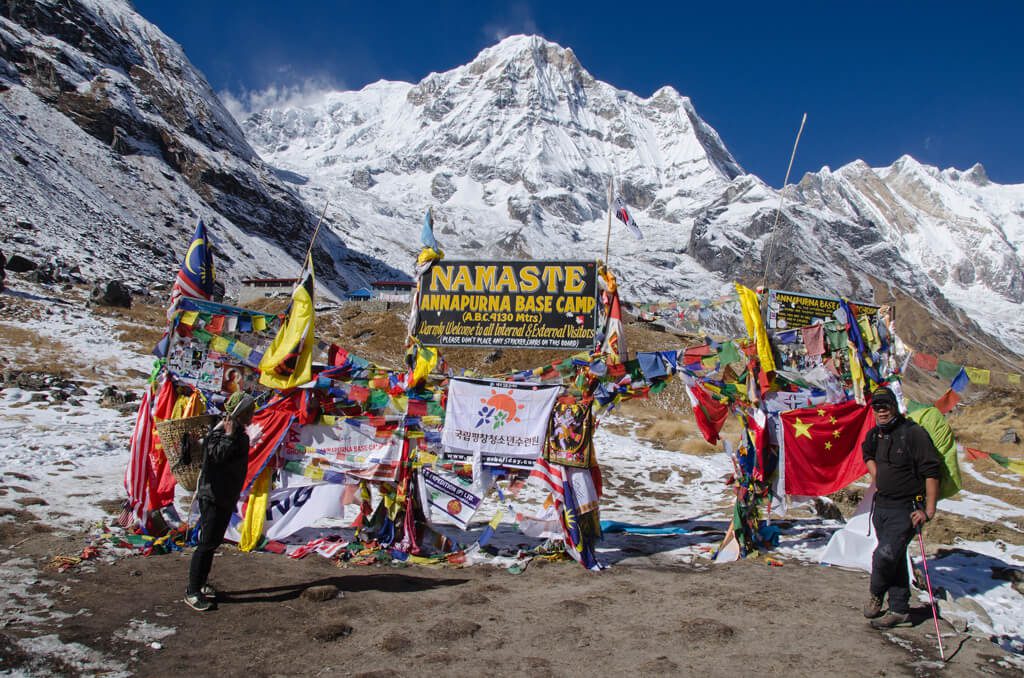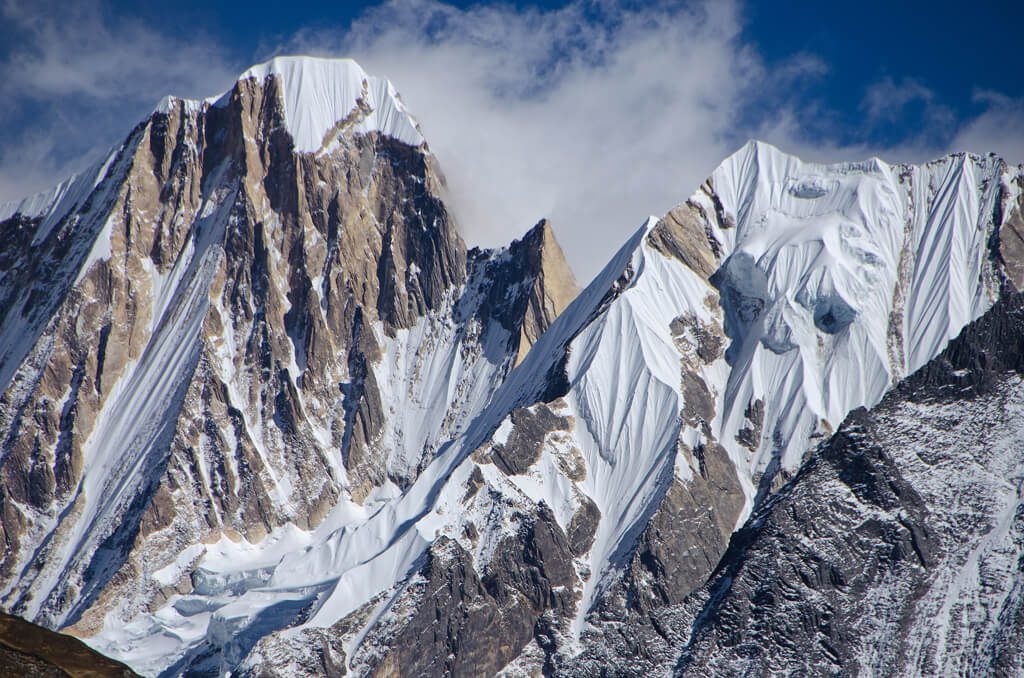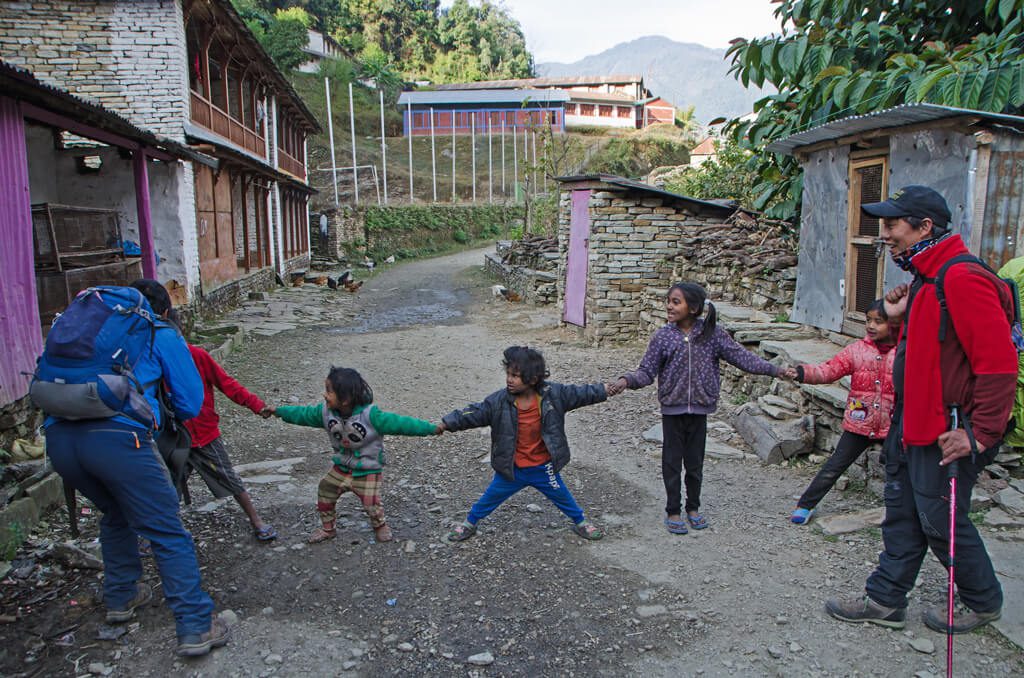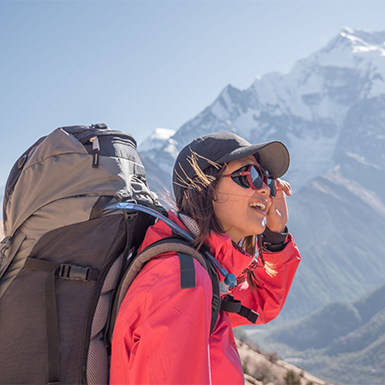Are you planning to trek to Annapurna Base Camp? Would you like to know more about the Annapurna Base Camp Trek, or are you confused about the trek? Here are Annapurna Base Camp Trek FAQs.
Q1. Where is the Annapurna Base Camp Trek located?
Annapurna Base Camp Trek is located in the Annapurna region of Nepal, which is north of the beautiful city of Pokhara. The trek takes us to the north-central region of Nepal in the Gandaki zone. Kali Gandaki borders it on the west and Marshyangdi River on the north. You will be trekking in the heart of the Annapurna Conservation area.
Q2. How long is the Annapurna Base Camp Trek?
Annapurna Base Camp Trek usually takes 7 to 15 days to complete, depending upon the itinerary and the package you choose.
The total distance of the trek is about 115 KM. Thus, you will be covering about 10 to 15 KM per day.
We offer 14 14-day Annapurna Base Camp Trek with a few acclimatization and rest days if you choose to trek with us.

Q3. How Difficult is the ABC Trek?
Annapurna Base Camp Trek is not as difficult as other popular treks like Annapurna Circuit Trek and Everest Base Camp Trek. The ABC trek is moderately complex. If you are an experienced trekker, then the trek is relatively more straightforward for you.
However, if you are a beginner or novice trekker, it can be quite a challenging trek as the trail is full of ups and downs. Many ascend and descend, which can make you tired pretty fast. You will be walking on uneven, rugged trails and stone steps.
But with proper preparation and training, you can comfortably complete the trek and avoid the ABC trek difficulty. I recommend you do exercise, walking, running, or any form of activity before the trek to prepare your body for the trek.
Q4. When is the best time to trek to the Annapurna Base Camp?
Annapurna Base Camp Trek can be done at any time as each season offers a different trekking experience. The best time for the Annapurna Base Camp Trek depends on your weather preferences and what you expect from the trek.
However, Autumn (September to October) and Spring (March to May) are considered the two best seasons to trek to the Annapurna Base Camp.
During these periods, the weather and temperature conditions are perfect for trekking. The days are warm and bright with clear skies.
The views of the mountains are just spectacular. Along with that, there is very little chance of rainfall during these seasons. And vegetation is at its full blossom.
Related Article
Q5. What are the permits required for the ABC Trek?
You will require two trekking permits to do this Annapurna Trekking. Since Annapurna Base Camp Trek comes under the premises of the Annapurna Conservation Area, you will require an entry permit (ACAP) to enter the premises of the conservation area. Along with that, you need to obtain a TIMS (Trekkers’ Information Management System) Card.
- Cost for TIMS per person:
-
- SAARC Countries: NPR 600; approximately US $6
- Other Countries: NPR 2000; approximately US $20
-
- Cost of TIMS for Group:
-
- SAARC Countries: NPR 300; approximately US $3
- Other Countries: NPR 1000; approximately US $10
-
- Cost for ACAP per person :
-
- SAARC Countries: NPR 200; approximately US $2
- Other countries: NPR 3000; approximately US $30
-
You can get these permits from the Nepal Tourism Board Office on Pradarshani Marg, Kathmandu.

Q6. What are the major highlights of the Annapurna Base Camp Trek?
- Enjoy the beautiful city of Pokhara.
- Traverse the inner sanctuary of Annapurna with panoramic views of 10 peaks over 6000m
- Breathtaking views of Dhaulagiri and the Kali Gandaki from Poon Hill
- Explore the local culture and their lifestyle
- Visit Annapurna and Machhapuchhere base camp
- Scenic hike across typical Gurung villages
- Natural hot spring in Jhinu Danda
- Explore Rural Nepalese lifestyle
- Cross perennial rivers and thrilling suspension bridges on the trail.
Q7. Do I need travel insurance for the ABC Trek?
Travel insurance is optional. However, it is better to have travel insurance as anything can happen during the trek, such as accidents, injuries, altitude sickness, etc. Please make sure your insurance covers emergency evacuations and hospitals when you sign up for travel insurance.
Q8. Can I trek solo?
Yes, you can. Since the Annapurna region doesn’t fall under the restricted area of Nepal, you can trek to Annapurna Base Camp independently.
Related Post
Q9. What accommodation and food can I get on the Annapurna Base Camp trek?
You will be accommodated in the local teahouses and lodges in this ABC Trek. The teahouses and lodges are nice and clean with private rooms with shared or attached bathrooms. The rooms are clean and cozy. There are some community lodges on some trekking trails which are newly opened.
You can get a wide variety of fresh and healthy food in these teahouses. They offer different foods such as dal bhat, pizza, spaghetti, pasta, etc. Among these foods, Dal Bhat is the best choice as they are healthy and filling, and you can get a refill. It is the best value for money.
Q10. What are the possibilities of drinking water in Annapurna?
You can buy a water bottle on the trails for safe drinking water. But having your water bottle is much more convenient as you can fill your bottle from the teahouse and lodge. You may also take the water from the taps and use water purifying tablets during the Annapurna trek.
Q11. Should I hire a guide or porter for Annapurna Base Camp Trek?
Having a guide and porter is not mandatory for the ABC trek. However, you will have an easy and comfortable trek if you hire guides and porters.
The porter will help you carry your luggage, so you can walk freely without worrying about the burden of your luggage. On the other hand, having a guide will help you navigate through the trail and give you insight into the trekking region, flora and fauna, and the culture of the locals. They can also help negotiate with the locals and will suggest the best accommodation and food options.
Related Post

Q12. Is there any risk of getting altitude sickness?
Yes, as you will be trekking above the altitude of 3000 meters. Each person reacts differently to the altitude regardless of their physical fitness.
Thus, it is highly recommended to learn about altitude sickness, its symptoms, and preventive measures. You should consult with your doctor about altitude sickness before the trek.
Q13. How do I avoid altitude sickness?
- Proper Acclimatization. After you ascend 1000m, stay there for one more night to acclimatize properly.
- Do not make a rapid ascent. Walk at a slow and steady pace.
- Take proper rest during the trek
- Avoid alcohol and smoking during the trek.
- Always keep your body hydrated.
- Trek high and sleep low.
- If you have mild symptoms, do not proceed higher. Take aspirin tablets.
- If you have worsening symptoms, go down immediately.
Q14. What are the required trekking gear and equipment for the Annapurna Trekking?
- Trekking Boots and Spare Laces
- Hat (Warm), Scarf, and Gloves
- Waterproof Jacket
- Trousers
- Running shoes, Sandals, or Flip flops
- Wool blend socks, sock liner
- Thermal Innerwear
- Sun Hat
- Fleece Jacket T-Shirts (Quick Dry)
- Down Jacket (Min -10C)
Backpack
- Sleeping Bag and Silk Liner
- Maps, Torch (Flash Lights), and Water Bottle
- Duffel Bag
Other Items
- Toiletries
- Quick-drying Camp Towel
- Laundry Soup Powder or bar
- Toilet Paper
- Sunblock Cream and Lip warm
- Polarizing Sunglasses
- Water Purification Tablets
- Medical and First Aid Kit Box
Q15. Are there any ATM facilities on the trekking route?
You won’t find any ATMs on the trekking trail. So, it is suggested to withdraw the money from Kathmandu or Pokhara. Take enough amount of money to last you for the entire trek. For further information, please feel free to contact us.



